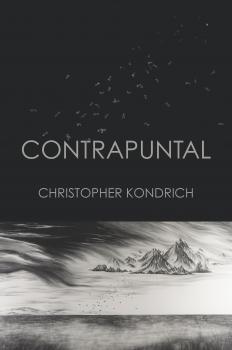ТОП просматриваемых книг сайта:
Free Verse Editions
Скачать книги из серии Free Verse EditionsАннотация
Аннотация
Аннотация
Информация о книге
Автор произведения Dawn-Michelle Baude
Жанр Языкознание
Серия Free Verse Editions
Аннотация
Информация о книге
Автор произведения Morgan Lucas Schuldt
Жанр Языкознание
Серия Free Verse Editions
Аннотация
& in Open, Marvel grapples with wonder in everyday existence. A sense of quietness through seasonal change threads the interlaced contemplations in the collection, which approach the twice-removed space we occupy from the physical world. The act of mind and body is experienced as a journey for both writer and reader. How we are all elements in fall. How we are all purpose. How what makes us connects us. How there are lovely works beyond us, which in turn, include us. How we plead to ourselves, See . . . just see.
Информация о книге
Автор произведения Felicia Zamora
Жанр Зарубежные стихи
Серия Free Verse Editions
Аннотация
The poems in Jennifer Atkinson’s Canticle of the Night Path, collected in alphabetical order from “Canticle of A” to “Canticle of Zed,” are little songs of five—five lines, five sentences, five couplets, or five paragraphs—canticles to, for, with, and of all sorts of things. There are Canticles to Chipped Plates, to Dust, with Eyelashes, with Macaroons, of Rhymes, Rushes, Slippage, Stone, Shrapnel and Manna. Woven throughout the book, along with a series of Parables as if excerpted from her teachings, is the legendary figure of Mary Magdalene, as painted by Giotto and re-imagined as a teacher of embodied spiritual and intellectual practice. Some canticles are lyric improvisations quick with rhyme, allusion, and wordplay. Others are meditative investigations of darkness, pleasure, cruelty, or joy. All are acts of fierce attention to language, the musical possibilities of the lyric line, and the natural world, built and unbuilt.
Аннотация
The Book of Isaac is a sequence of 56 ‘distressed’, or damaged, sonnets in which Aidan Semmens endeavors to distil something of the Russian-Jewish experience from the history of his own family, in particular that of his great-grandfather, the economist, lawyer, journalist and socialist Isaac Hourwich.
Аннотация
CONTRAPUNTAL by Christopher Kondrich | Free Verse Editions, Series Editor: Jon Thompson | "An understanding of the nature of consciousness reveals itself to be more elusive the longer one tries to approach it. The closer we get, the more vivid the confusion is. And this is the case regarding not only our handle on consciousness, but also the one we have on identity and even on reality itself, both of which depend upon consciousness-and all three of which, ultimately, prove more malleable than we might care to admit. They can be, and are often, altered by pharmaceuticals, self-scrutiny, the influence of others, one's own force of will, illness, and even just through our constant interplay with what we call the world.
Информация о книге
Автор произведения Christopher Kondrich
Жанр Языкознание
Серия Free Verse Editions
Аннотация
Tracing the intertidal circuits of story and understory, of body and soul, of land and sea, Christopher Sindt’s sensitive and intelligent poetry offers “a foundation for becoming.” Acutely attentive to the ways ecology and its theology sing in harmony, The Bodies strikes chords—voices and forms laid among and alongside each other. Here, the reader enters into the ways we all “must travel the land of/duplicate forms, hip bone of rabbit chasing after hip bone of fox.” Sindt guides us through this terrain, from false clarity to a truer knowledge full of “seams and breaches.” This is tide, song, transfiguring body: a poetry to be embraced with “both arms please.” —Elizabeth Robinson










